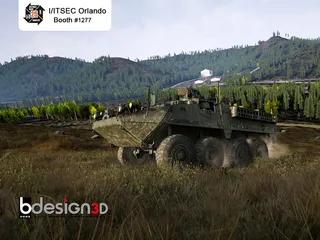Florida Hospital Nicholson Center Advances Surgical Training and Procedure Safety Using $5.9 Million in DoD Grants
Contact Our Team
For more information about how Halldale can add value to your marketing and promotional campaigns or to discuss event exhibitor and sponsorship opportunities, contact our team to find out more
The Americas -
holly.foster@halldale.com
Rest of World -
jeremy@halldale.com
The Florida Hospital Nicholson Center completed 13 research projects over the last six years focused on advancing robotic and laparoscopic surgery safety and creating a new standard for surgical training using $5.9 million in grants from the Department of Defense (DoD). With the grants, the Nicholson Center conducted a series of experiments in four categories focused on patient safety, telesurgery (remote surgery), simulator effectiveness and simulator design.
"The safety and efficacy of robotic surgery has been explored and brought into question in the past, but the key to progress is not necessarily in the capabilities of the robot, but rather the effective training of our surgeons," said Dr. Roger Smith, CTO of the Nicholson Center.
"Our team has completed a unique and complex set of experiments and has made unmatched progress in ensuring that surgeons are trained in the most impactful ways possible."
Establishing a Training Protocol to Improve Patient Safety
After collecting the input of more than 80 of the world's top robotic surgeons, the Center developed the first comprehensive training program called the Fundamentals of Robotic Surgery Program (FRS), which consists of a psychomotor skills device and a detailed online curriculum. Prior to the Center's research, there was no universal and independent training program for robotic surgeons, and therefore, no procedural standard for safety existed. But now, FRS is being used by hospitals worldwide to train surgeons new to robotic surgery and it has been officially published.
Proving the Feasibility of Telesurgery
Remote robotic surgery, or telesurgery, has major implications in both the military and beyond. If a surgeon was able to perform a procedure on a patient thousands of miles away, then one day doctors could deliver life-saving treatment to a soldier wounded on a battlefield without ever having to enter the warzone. To determine the practical applications of telesurgery, the Center studied how lag times and video delays affect doctors during the procedure, concluding surgeons couldn't perceive delays faster than 200 milliseconds (almost the speed of a blink), and most surgeons could compensate for delays up to 500 milliseconds (half a second). Most notably, the research revealed that with today's IT infrastructure in hospital systems, telesurgery is possible, which would be a major milestone in the future of healthcare.
Understanding the Effectiveness of Simulators
With the medical simulation market is expected to reach $2.27 billion by 2021 and the growing number of simulators entering the market, the Center set out to analyze a variety of devices and explore the relationship between medical simulation and gaming. The team found that just playing video games shows no improvement on robotic surgery aptitude – meaning properly trained surgeons still remain the best performers of simulated surgery, rather than avid gamers. The Center also analyzed a number of simulators for the da Vinci robot, and worked on a study with experienced surgeons to determine which simulator is most effective for training, taking cost and experience into consideration. The findings suggest most surgeons find Mimic dV-Trainer to be the most effective and affordable method for training via a simulator.
Designing Simulators for Optimal Training
As a result of the research around the most effective simulators, the Center conducted design research for two major robotic-assisted surgical devices that will help medical device companies understand the benefits of incorporating simulators into surgeon training programs, and it identifies design aspects that are necessary for optimal training and repeated rehearsal.
"Our goal is not only to revolutionize robotic and laparoscopic surgeries, but to also ensure patient safety during the procedures, above all else. Through our telesurgery trials, training curriculums, and simulator evaluations, in conjunction with the DoD, we have identified a great need for universal training and standards within robotic surgery," continued Dr. Smith. "We believe each of these unique research projects has laid the groundwork for a new page in surgical innovation, and we look forward to seeing these efforts put to use universally."


